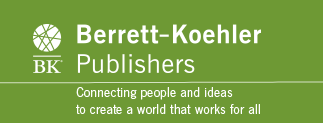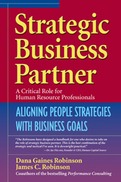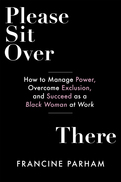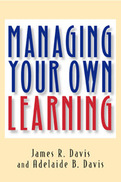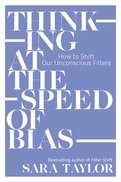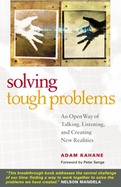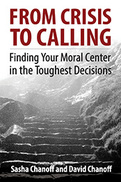Unfortunately research also indicates that few HR functions have become strategic. Most still operate in a primarily administrative and tactical manner—the very work that is increasingly being outsourced. Clearly there is a gap between what business leaders and employees need from their HR departments and what HR is providing.
HR functions must become more integrated into the business, with some people on the HR team assuming the role of Strategic Business Partner (SBP). Here, Dana and Jim Robinson offer guidance for HR, Organization Development and Learning professionals who aspire to transform themselves into effective Strategic Business Partners. They explain how SBPs build partnerships, based upon credibility and trust, with key organization leaders. These partnerships provide SBPs with opportunities to identify and support projects directly aligned with business goals. The success of these projects deepens the SBPs' credibility, enabling them to be viewed as strategic partners. At this higher level of accountability, SBPs work with business leaders to form long-range business strategies and plans, creating and implementing people initiatives that link into and support the business strategies and plans.
This practical guide offers case studies, exercises, tips, and tools you can use to become a Strategic Business Partner in your organization.
- By the coauthors of the bestselling Performance Consulting and Zap the Gaps (with Ken Blanchard)- each more than 60,000 copies sold
- The first book to show human resource professionals precisely how they can assume the critically important role of Strategic Business Partner
- A how-to book filled with specific techniques and practices to use on the job
Black women continuously navigate systems that were never intended for them while playing by a set of rules they never agreed to or were ever trained for.
In this book, Francine Parham shares her knowledge as a Black woman and a former global executive of two major corporations on how to move up in the workplace while maintaining a sense of sanity. The key skill--one that Black women are rarely taught--is understanding the power dynamics within your organization and learning how to shift the power to your advantage. Parham shows how to use your voice, strategically build the right relationships, and support others once you have achieved a powerful position--tools any woman can use to increase her power and ensure a successful, fulfilling career.
Parham says Black women are already empowered; there is no shortage of qualified professional Black women in the talent pipeline. But it does not feel empowering when organizations force Black women to work every day to overcome biases, discriminatory institutional practices, and unwritten rules of power at play that hinder their career development and professional advancement.
Please Sit Over There honors the painstaking work being undertaken to deconstruct broken institutions and demonstrates how Black women can achieve their goals while those institutions still exist-effectively opening doors for all women of color.
James and Adelaide Davis detail seven major ways of learning: learning new skills, learning from presentations, learning to think, learning to solve problems and make decisions, learning in groups, learning through virtual realities, and learning from experience. They also provide useful guidelines for maximizing results by becoming an effective, active participant in learning. They explain, for example, how learning in a group can be enhanced by knowing how a group works and considering factors such as group size, cohesion, task and process behavior, and participant roles, as well as the things that can go wrong in groups, such as conflict and apathy.
For each of the seven ways of learning, the authors tell what is unique about it, how learning actually takes place, and how it can be augmented in each situation. They reveal how the theory behind each way of learning originated, what researchers have learned about it, and what the individual's role is as a participant. And at the end of each chapter, they include a list of ten things that anyone can do to get the most from that particular type of learning.
No matter what our previous experiences with learning may have been, we all must become self-directed learners if we are to succeed in this new era. Managing Your Own Learning provides step-by-step, proven advice on how to succeed in the 21st century workplace by becoming a proactive, goal-directed, perpetual learner.
- Describes seven major ways of learning and shows how each can best be used to maximize self-directed learning
- Provides a step-by-step guide to assessing previous learning and designing an action plan for future learning
- Reveals how to expand opportunities for learning and use libraries and the Internet more effectively
Learn to recognize your unconscious bias and create positive change.
Respected DEI expert Sara Taylor presents a down-to-earth guide on how to tackle unconscious biases and foster true equity in our rapidly changing world. Through relatable examples and practical strategies, readers learn to deliberately slow down their thought processes and become aware of their filters in various situations. Taylor encourages readers to question their own assumptions by asking, "Do I know that what I'm thinking is actually true?" and "Why might I be reacting this way?"
The book demonstrates the importance of a clear set of competencies, skills, and strategies for addressing unconscious bias. By developing a culturally competent mindset and using a shared, holistic language to discuss these issues, readers gain the tools to understand, discuss, and implement change both at home and in the workplace. This approach avoids blame or shame, making it accessible and empowering for everyone.
The book's insights extend beyond individuals; it demonstrates how organizations can scale up cultural competence to transform their structures and systems. With a strong sense of hope, readers are empowered to make a difference, creating a more just and equitable world for all.
Adam Kahane has worked on some of the toughest, most complex problems in the world. He started out as an expert analyst and advisor to corporations and governments, convinced of the need to calculate “the one right answer.” After an unexpected experience in South Africa during the transition away from apartheid, he got involved in facilitating a series of extraordinary high-conflict, high-stakes problem-solving efforts: in Colombia during the civil war, in Argentina during the collapse, in Guatemala after the genocide, in Israel, Northern Ireland, Cyprus, and the Basque Country. Through these experiences, he learned to create environments that enable new ideas and creative solutions to emerge even in the most stuck, polarized contexts. Here Kahane tells his stories and distills from them an approach all of us can use to solve our own toughest problems—at home, at work, in our communities, and in national and international affairs.
“This breakthrough book addresses the central challenge of our time: finding a way to work together to solve the problems we have created.”
—Nelson Mandela
As a young aid worker, Sasha Chanoff was sent to evacuate a group of refugees from the violence-torn Congo. But when he arrived he discovered a second group. Evacuating them too could endanger the entire mission. But leaving them behind would mean their certain death.
All leaders face defining moments, when values are in conflict and decisions impact lives. Why is moral courage the essential factor at such times? How do we access our own rock-bottom values, and how can we take advantage of them to make the best decisions? Through Sasha's own extraordinary story and those of eight other brave leaders from business, government, nongovernment organizations, and the military, this book reveals five principles for confronting crucial decisions and inspires all of us to use our moral core as a lodestar for leadership.
